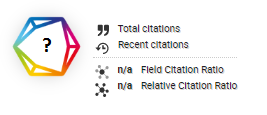SISTEM KENDALI METODE PID DAN KOMBINASI SPESIFIKASI PADA KECEPATAN TINGGI INDUKSI MOTOR
DOI:
https://doi.org/10.46984/sebatik.v18i1.86Keywords:
Motor AC induksi, PID,Kombinasi spesifikasi,Kecepatan TinggiAbstract
Metode desain kendali menggunakan konveksitas dari umum loop tertutup spesifikasi kinerja. Sehubungan dengan loop tertutup fungsi transfer sistem untuk menggabungkan memenuhi setidaknya satu loop tertutup spesifikasi kinerja dengan merumuskan pengendali tunggal yang memenuhi semua spesifikasi. Sedangkan kendali gain tuning pusat proses desain, proses tuning sangat disederhanakan, jika dibandingkan disajikan ketika satu set kendali keuntungan disesuaikan untuk memenuhi kombinasi simultan spesifikasi loop tertutup. Metode kendali metode ini yang diusulkan diterapkan pada motor AC induksi kecepatan tinggi, dengan inner-loop flux vector pengendali diterapkan, untuk merancang kendali posisi sistem.
References
Dunia Listrik, Motor Listrik AC Satu Fasa, http://dunialistrik.blogspot.com/2012/04/motor-listrik-ac-satu-fasa.html.
Soebagio,”Model mesin AC pada koordinat d-q-n”, Materi kuliah Mesin Listrik Lanjut, ITS, 2013
Bimal Kr. Bose,” Modern Power Electronics and AC drives”, Prentice Hall PTR, 2012.
P. Titinen, P. Pohkalainen, J. Lalu,”The next generation motor control method : Direct torque control (DTC),”EPEJ, vol.5, pp.14-18, Marc.2012.
Nuno M.Silva, Antonio P, Martin, Adriano S.Carvalho,”Torque And Speed Modes imulation of A DTC-Controlled Induction Motor”, Proceeding of the 10th Mediterranean Conference on Control and Automation-MED 2002 Lisbon, Portugal, July 2011.
H. Tajima andY. Hori, “Speed sensorless field oriented control of induction motor”, IEEE Trans. Ind. Appli., vol. 29, pp. 175–180, Jan./Feb. 2011.
Bambang Purwahyudi, Soebagio dan Mauridhi Hery Purnomo, “Perancangan Neural Network-Genetic Algorithm (NN-GA) Observer Untuk Identifikasi Kecepatan Motor Induksi”, Proceedings SITIA, Jurusan Tek. Elektro ITS, 2 Mei 2011, hal. 436-441.
Downloads
Published
How to Cite
Issue
Section
License
Authors retain all their rights to the published works, such as (but not limited to) the following rights; Copyright and other proprietary rights relating to the article, such as patent rights, The right to use the substance of the article in own future works, including lectures and books, The right to reproduce the article for own purposes, The right to self-archive the article








